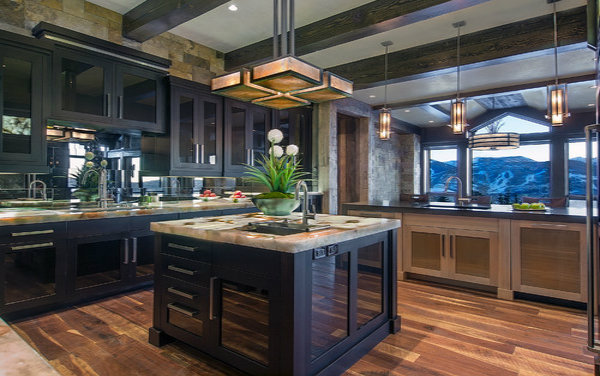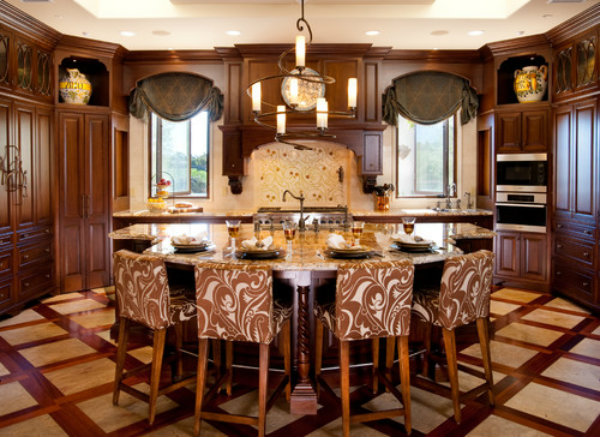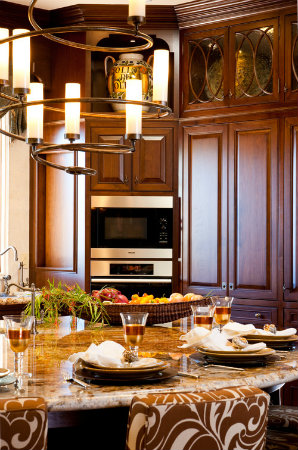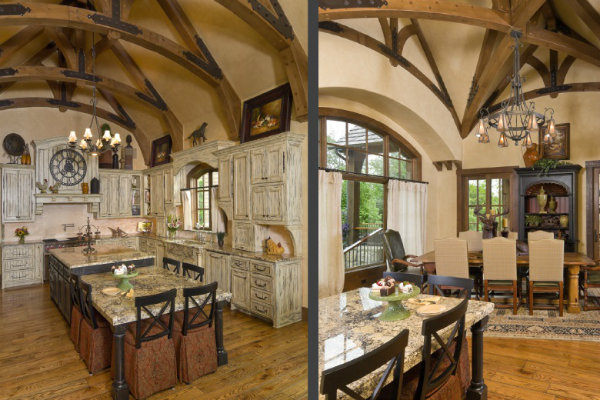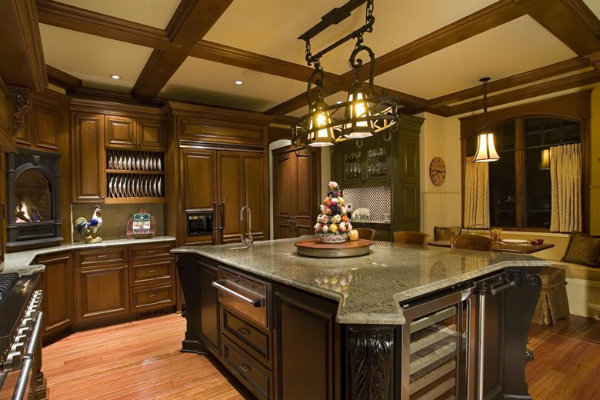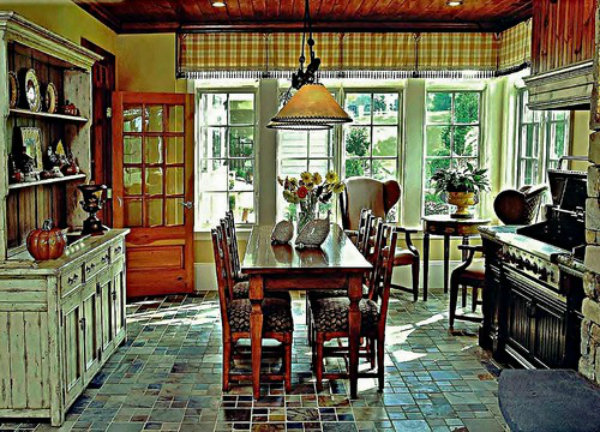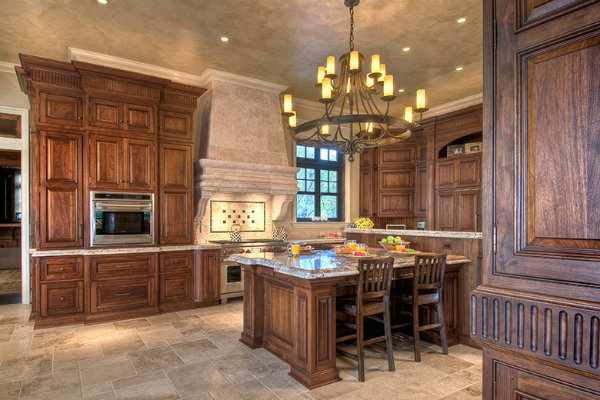ADD DRAMA TO THE KITCHEN WITH AN IMPRESSIVE CHANDELIER
Brilliant chandeliers are often relegated to our home’s more formal areas, while in the kitchen — “the most utilitarian room in the house” — we usually settle with predictable pendants or function-focused ceiling lights. But in recent years, kitchens have become much more than a functional space for daily cooking tasks.
Dressing up the ceiling with an eye-catching chandelier is an easy way to dial up the aesthetic appeal in any kitchen. A chandelier transforms what’s traditionally viewed as formal lighting into a functional fixture for the kitchen, and can add an impressive and unexpected designer touch.
When selecting a kitchen chandelier, keep these important points in mind:
Create a Focal Point: Hanging a chandelier above a central workspace — e.g. a kitchen island or breakfast table – is a bold way to enhance visual interest. It also makes the space appear more voluminous by drawing the eye upward.
Consider both Aesthetics and Function: Kitchens need lots of light, so make sure that your chandelier provides a meaningful light source as well as eye appeal. Choose a chandelier with lots of light output and consider fixtures with downlights to directly illuminate work surfaces or high traffic areas. Reflective materials can also help magnify the light. Avoid chandeliers that primarily direct light upward.
Choose Materials that Enhance the Space: Chandeliers that repeat materials and finishes already used in the kitchen can create a sense of harmonious balance, but consider adding a splash of personality. For example, introducing a new material with a complementary design palette can provide an unexpected visual “twist” on existing interior elements. In a monochromatic kitchen, a chandelier can be cleverly deployed to add a surprising pop of color.
Focus on Scale: Scale is a very important but frequently overlooked design tool. In an expansive kitchen, standard size chandeliers are often too small for the space, so consider either a custom-sized chandelier or a pair of standard sized chandeliers or large pendants. Conversely, a large or ‘visually busy’ chandelier can easily overwhelm a smaller kitchen.
Layer Kitchen Lighting: As Houzz describes, there are seven levels of illumination that should be considered in a kitchen lighting plan: countertop and general lighting, under-cabinet task lighting, over-cabinet up lighting, accent cabinet lighting, supporting sconce fixtures, ceiling lighting, and a central accent fixture. A well-chosen chandelier can satisfy your central accent and ceiling lighting requirements, and eliminate the need for several functional ceiling cans.
Finding the perfect “off-the-shelf” chandelier that fits every functional and aesthetic requirement can be difficult. At Hammerton, we routinely accommodate our customers’ unique specifications by scaling or modifying existing fixtures from our catalog. We also frequently work with customer-specified materials and design custom fixtures entirely from scratch.
Contact us if you’re interested in lighting up your kitchen with an impressive chandelier.
